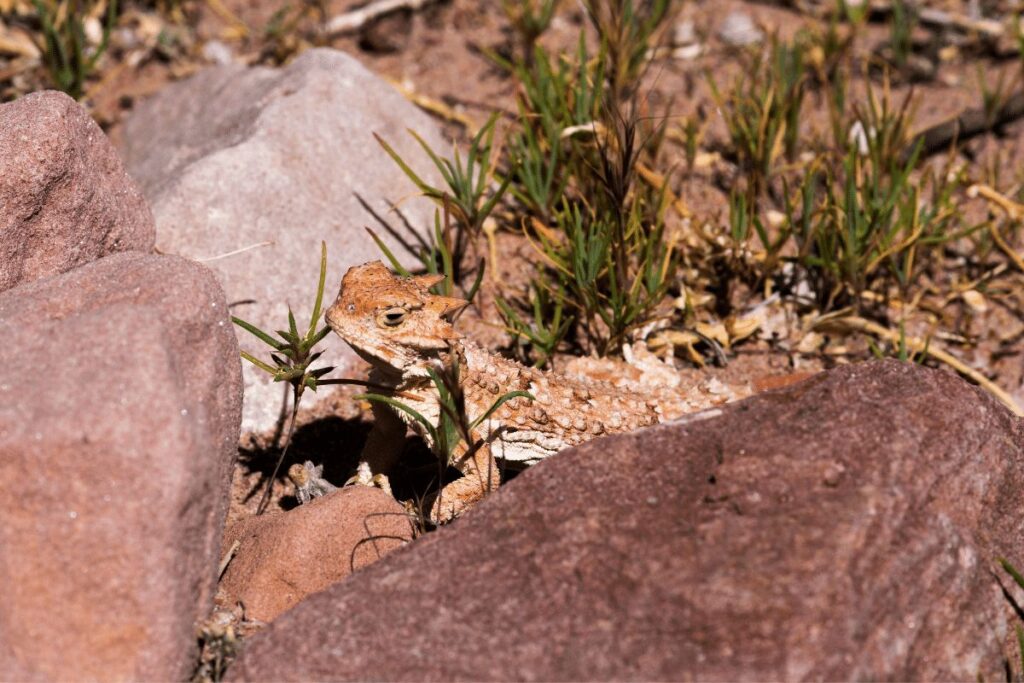Discover 15 intriguing facts about the wildlife in Guadalupe Mountains National Park, from ancient seas to desert adaptations. Dive into nature's magic!
Hey there, wildlife aficionados! Ready for a deep dive into the wild heart of Texas? Guadalupe Mountains National Park isn’t just about those jaw-dropping landscapes – it’s a critter-packed wonderland waiting to surprise you.
Buckle up, because we’re about to spill 15 fantastic tidbits about the incredible creatures that call this park home.
Trust us; by the end, you’ll be itching to grab your field guide and head to the Guadalupes to witness the magic firsthand. Let’s get started!
An Ancient Sea
Ever wondered what makes the Guadalupe Mountains so unique? Well, it’s time for a jaw-dropping revelation! Picture this: about 265 million years ago, instead of the towering peaks and rugged landscapes we see today, this entire region was submerged under a vast, ancient sea.
That’s right, the very ground you’d walk on during a park visit was once teeming with marine life, forming a bustling underwater reef ecosystem.
Now, the sea has long since receded, but it left behind a spectacular souvenir: the massive limestone formations we see today. These aren’t just ordinary rocks, folks.
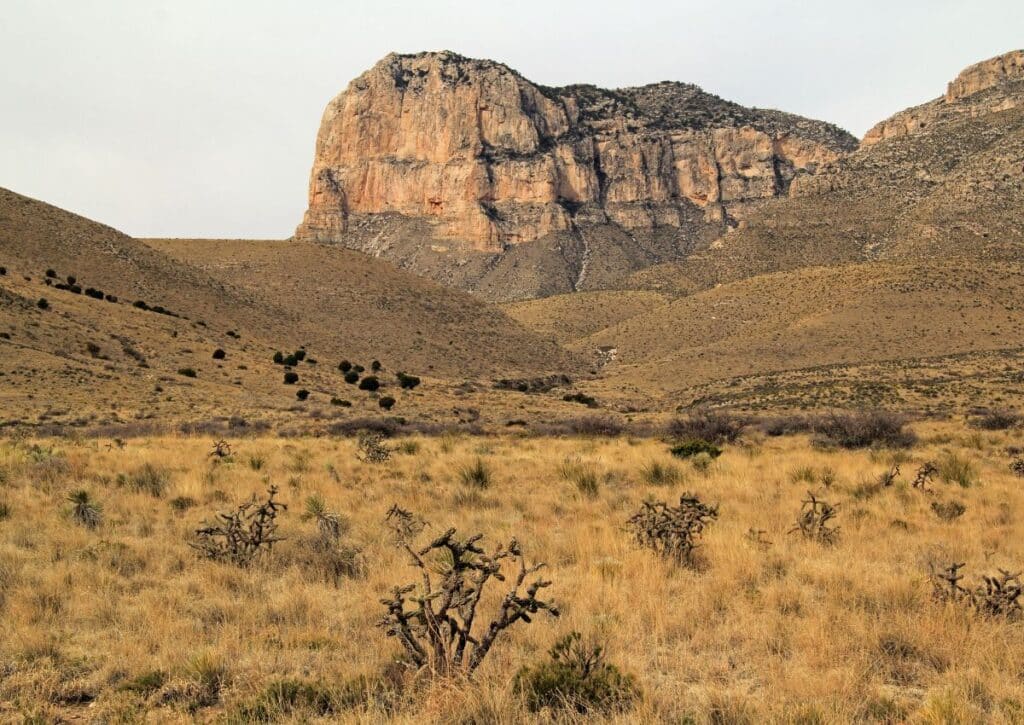
These formations are like a time capsule, preserving the fossilized remains of the creatures that once swam in those prehistoric waters. From tiny trilobites to various marine plants, the limestone is a veritable treasure trove for anyone with a keen eye and a love for ancient history.
So, the next time you’re hiking through the Guadalupe Mountains, take a moment to touch the rocks and let your imagination drift back in time. It’s a humbling reminder that even in the wild heart of Texas, the echoes of ancient oceans are never too far away.
Lucifer’s Beauty
If there’s a starlet of the avian world in the Guadalupe Mountains, it’s undoubtedly the Lucifer Hummingbird. Now, don’t let the name spook you! While “Lucifer” might conjure images of fire and brimstone, this little bird is all about dazzle and allure. Known for its striking iridescent gorget—a shimmering patch on its throat—the Lucifer Hummingbird is a sparkling gem against the park’s rugged backdrop.
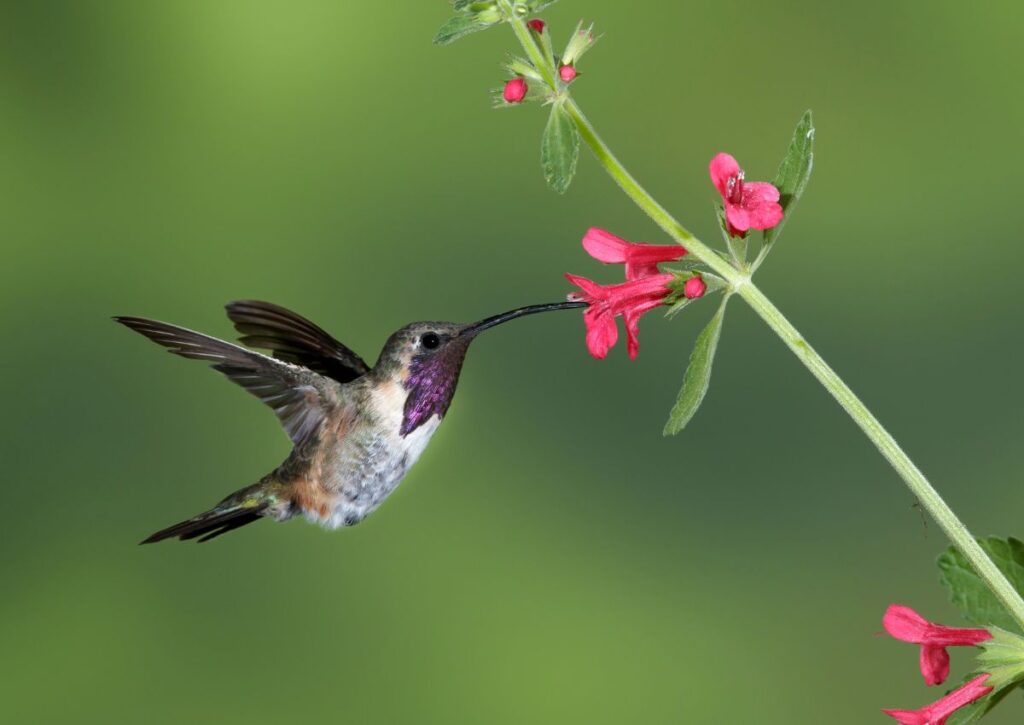
A fluttering dynamo, this hummingbird isn’t just about good looks. Its nimble acrobatics and rapid wingbeats make it a sight to behold, especially when feeding on nectar or dancing through the air in courtship displays. But here’s the kicker: spotting one in the U.S. is like finding a needle in a haystack. These birds are rare north of the border, making Guadalupe Mountains National Park one of the few places you can witness their beauty.
So, on your next visit, be on the lookout for this petite avian wonder. With a bit of patience and luck, you might just catch a glint of Lucifer’s iridescence, proving that sometimes, beauty does indeed come in the tiniest of packages.
Camouflage Masters
Among the diverse residents of Guadalupe Mountains National Park, there’s one that truly stands out in the art of disguise: the Greater Short-horned Lizard. At first glance, this diminutive reptile might just seem like another part of the rocky terrain, expertly blending into its surroundings. But don’t be fooled; it has some jaw-dropping tricks up its scaly sleeve.
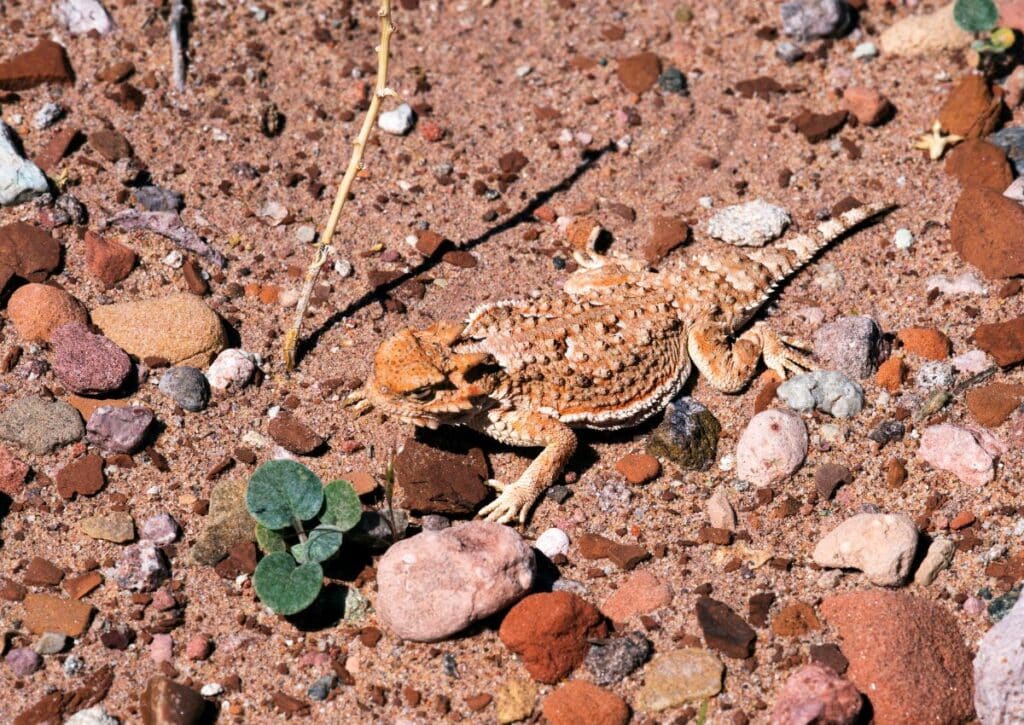
You see, when this lizard feels threatened, it doesn’t just rely on its camouflage. It employs a defense strategy that seems straight out of a comic book: shooting blood from its eyes! Yes, you read that right.
This startling tactic, known as “autohemorrhaging,” is aimed at deterring predators. To any would-be attackers, this sudden and unexpected display is often enough to make them reconsider their lunch plans.
While it may sound a bit gory, this unique mechanism is a testament to the incredible adaptations species develop for survival. The next time you’re exploring the park’s trails, tread lightly and keep a keen eye on the ground. You might just be fortunate enough to spot one of nature’s most captivating camouflage artists in action.
Pinyon’s Secret
Amid the vast landscapes of the Guadalupe Mountains, there stands a tree that holds a secret passed down through the ages: the Pinyon Pine. On first observation, it might seem like just another member of the park’s diverse plant community, but delve a bit deeper and you’ll discover its hidden bounty.
The Pinyon Pine’s true gift lies in its cones, which are packed with edible nuts. These aren’t just any nuts; they’re a delightful treat cherished for their rich, buttery flavor. But the significance of these nuts goes beyond their taste. For centuries, Native Americans have relied on them as a crucial food source, using them in a variety of dishes and even grinding them into nutritious flour.
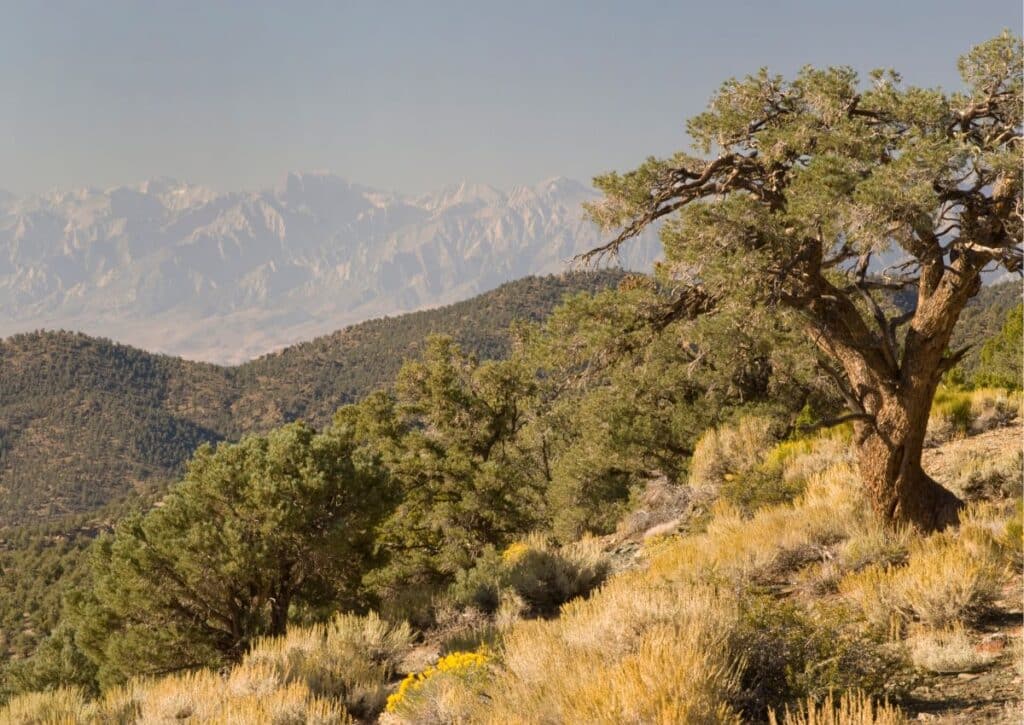
And it’s not just humans who are in on the secret. Wildlife, from birds to mammals, eagerly seek out these nuts, ensuring their sustenance during lean times. The tree plays a pivotal role in the ecosystem, providing nourishment to many inhabitants of the park.
So, the next time you stroll through the Guadalupe Mountains and spot a Pinyon Pine, take a moment to appreciate its long-standing role as a silent provider, feeding both the culture and the creatures of the region for generations.
Night-time Giants
When night blankets the Guadalupe Mountains, a special kind of giant emerges from the shadows: the tarantula. Now, if you’re picturing a creepy-crawly scene from a horror flick, take a deep breath and refocus. These magnificent arachnids are more about romance than they are about fright.
As fall colors paint the landscape, male tarantulas embark on a mission of love. Driven by the age-old quest for a mate, they wander the park’s trails and terrains, turning the region into a prime viewing arena for these eight-legged wonders. Far from being the menacing creatures of popular myth, these tarantulas are simply looking for a partner to dance the age-old dance of nature with.

For visitors, this offers a unique wildlife watching opportunity. Observing a tarantula in its natural habitat, especially during this season of courtship, is a testament to the park’s vibrant ecosystem and the myriad stories it tells.
Whether you’re an arachnid admirer or just someone curious about the wonders of the natural world, the fall season in Guadalupe Mountains promises a spectacle of nature’s giants on the prowl.
Sky King
High above the majestic peaks and valleys of the Guadalupe Mountains, a regal figure takes to the skies. Meet the Golden Eagle, the undisputed king of the park’s aerial realm. With every flap of its mighty wings, it commands attention and respect, embodying the wild spirit of this captivating landscape.
Being one of North America’s most formidable birds of prey, the Golden Eagle isn’t just impressive because of its hunting prowess. It’s the sheer size that often leaves observers in awe. Sporting a wingspan that can stretch up to a staggering 7 feet, it truly is a sight to behold, especially when seen soaring effortlessly against a backdrop of azure skies.

For those lucky enough to spot one during their visit, it’s an unforgettable experience. The silent glide, the sharp eyes scanning the ground below, and the occasional powerful dive for prey showcase the eagle’s unmatched dominance in its territory.
So, while you’re exploring the Guadalupe Mountains, remember to occasionally cast your eyes skyward. The grandeur of the Golden Eagle, with its immense wings stretched out, reminds us of the raw, untamed beauty of nature in its purest form.
Rare Avian Sight
Tucked within the vast expanse of the Guadalupe Mountains lies a special avian gem that birdwatchers eagerly flock to see: the Colima Warbler. This small, yet vibrantly colored bird, predominantly makes its home in Mexico. However, there’s a unique twist for those in the U.S. wanting to catch a glimpse of this elusive warbler.
In the entire United States, there are only two places where the Colima Warbler graces with its presence: the Guadalupe Mountains National Park and the neighboring Big Bend region. That’s right! This park holds the rare privilege of being one of the exclusive American stages for this bird’s captivating performance.
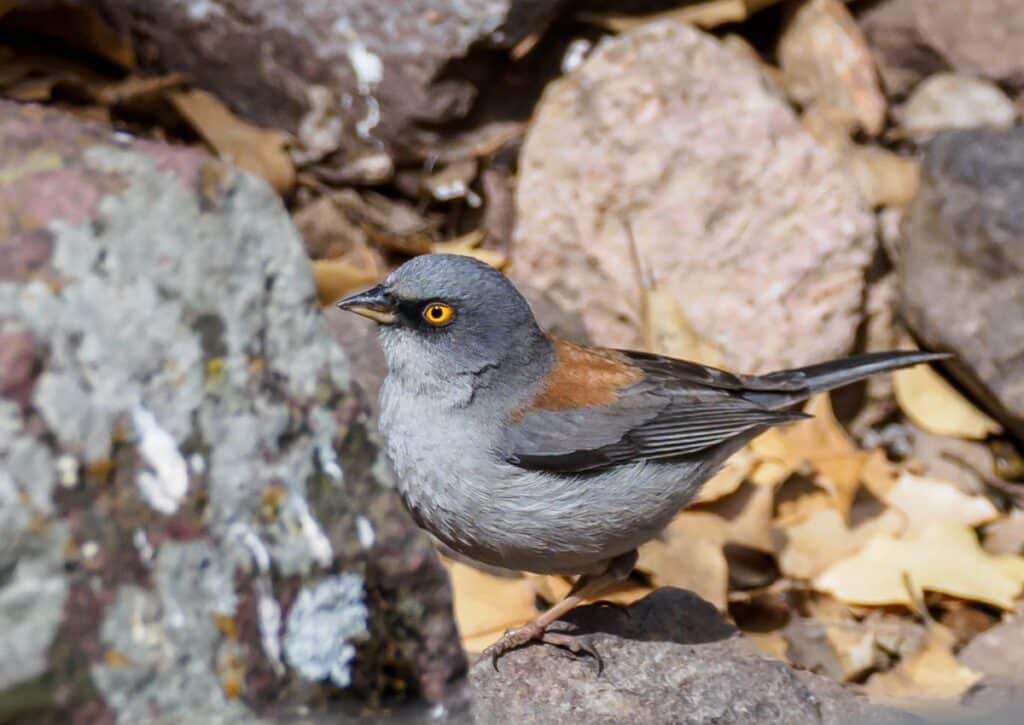
With its distinctive vocalizations and spirited movements, spotting the Colima Warbler becomes both a challenge and a delight for avid bird enthusiasts. Its rarity in the U.S., combined with its enchanting appearance and song, transforms any sighting into a treasured memory.
So, if you’re venturing into the Guadalupe Mountains with binoculars in hand, stay alert and listen closely. The Colima Warbler, with its exclusive U.S. cameo here, offers a testament to the park’s rich biodiversity and its status as a haven for rare avian wonders.
Mountain Lions’ Territory
Within the rugged terrains and shadowed canyons of the Guadalupe Mountains lurks a majestic and stealthy predator: the Mountain Lion. Also known as cougars or pumas, these big cats have made the park their domain, although they master the art of staying out of sight.
Mountain Lions are not just skilled hunters; they’re also territorial wanderers. Here’s a staggering fact: a single Mountain Lion’s territory in this vast park can span over an impressive 100 square miles. Just imagine! That’s a vast expanse for one feline to roam, hunt, and claim as its own.
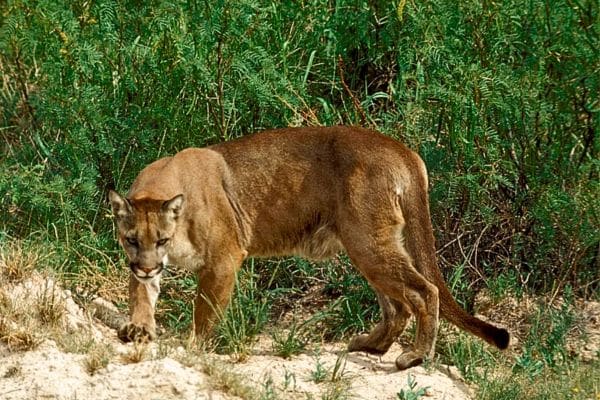
For visitors, the mere idea of sharing the park with such an iconic predator adds a layer of thrill to their adventure. While actual sightings are rare—thanks to the Mountain Lion’s elusive nature—there’s always that underlying sense of wonder, knowing that as you trek through the trails, a pair of feline eyes might be watching from a distance.
So, as you explore the Guadalupe Mountains, tread with respect and awareness. You’re walking in the Mountain Lion’s kingdom, a testament to the park’s wild and untouched beauty that these apex predators call home.
Life-giving Springs
Amidst the parched landscapes of the Guadalupe Mountains, a precious resource bubbles to the surface, offering a lifeline to countless inhabitants: the park’s springs. These natural fountains, like the renowned Smith Spring, are like oases in the desert, bringing forth life in an otherwise arid environment.
While the sight of clear, gushing water in such surroundings is a marvel in itself, it’s the magnetic pull these springs have on wildlife that truly astonishes visitors. From nimble deer quenching their thirst to vibrant birds splashing in joy, the springs become bustling hubs of activity, especially during the hotter parts of the day.
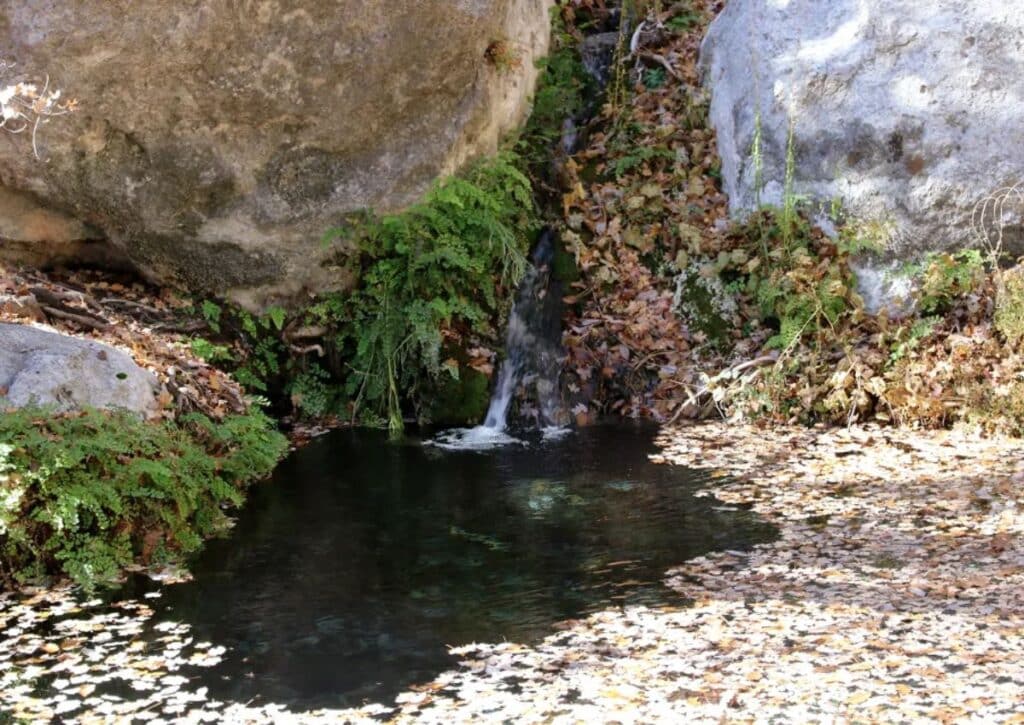
Smith Spring, in particular, is a testament to nature’s resilience and adaptability. In a region where water is a luxury, this spring’s consistent flow offers sustenance to a wide array of creatures. It’s a gathering spot, a meeting point, and a venue for nature’s daily dramas.
So, while navigating the Guadalupe Mountains, make it a point to visit one of these life-giving springs. Witnessing the convergence of diverse wildlife at these water sources provides a humbling reminder of nature’s intricate balance and the vital role water plays in sustaining it.
Desert Adaptation
The Guadalupe Mountains, with their vast stretches of arid landscapes, demand unique survival tactics from their inhabitants. One of the park’s remarkable residents, the mule deer, showcases just how ingenious nature can be when it comes to desert adaptation.
At first glance, you might notice something distinct about these deer: their notably larger ears. These aren’t just for show or merely an aesthetic difference. These expansive ears serve a dual purpose.
Firstly, in the blistering heat of the desert sun, their large surface area helps dissipate heat, aiding the deer in maintaining a cooler body temperature. It’s nature’s very own cooling system!
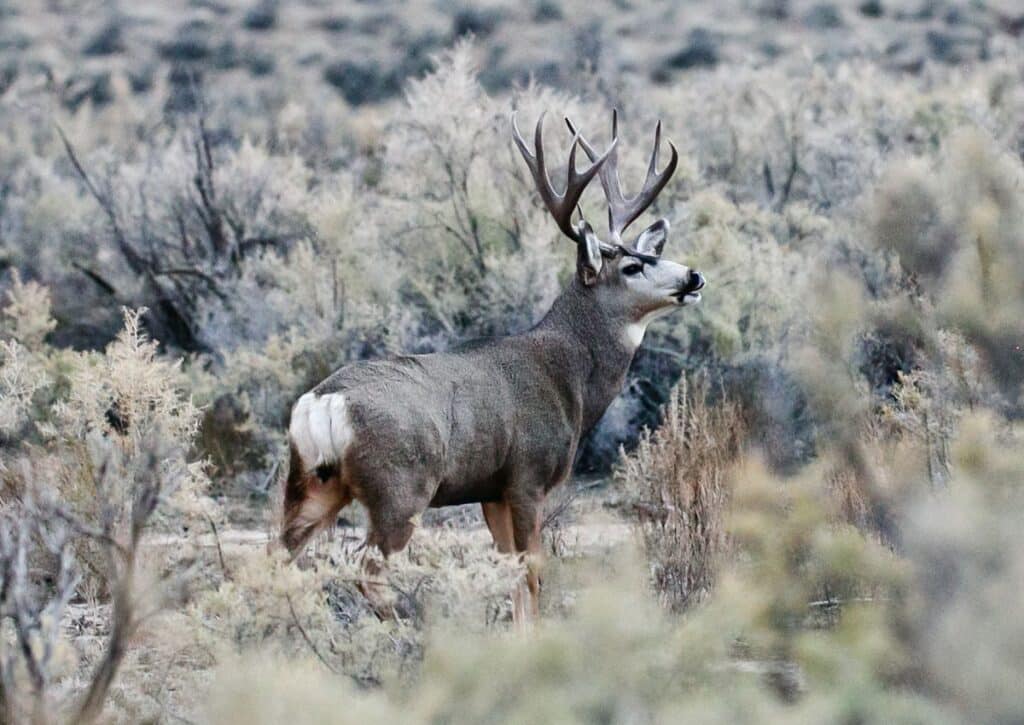
But there’s more to those ears than just heat management. In a terrain where predators could lurk behind any shrub or rock, having acute hearing is a lifesaver. The mule deer’s enlarged ears amplify sounds, allowing them to detect approaching predators from a distance and take evasive action.
So, as you traverse the park and spot these elegant creatures grazing or bounding away, take a moment to appreciate those magnificent ears. They’re a testament to nature’s ability to evolve and adapt, ensuring that species not only survive but thrive in challenging environments.
Bird Diversity
Nestled amidst the rugged terrains of the Guadalupe Mountains is a symphony of chirps, tweets, and calls, all playing in harmonious synchronization. This vast national park, renowned for its geological wonders and rich biodiversity, holds yet another feather in its cap – its astounding bird diversity.
A staggering count of over 300 species of birds have made their mark here, either as permanent residents, seasonal visitors, or transient migrants. From the piercing cry of raptors overhead to the melodious tunes of songbirds in the underbrush, every corner of the park echoes with avian melodies. This makes it nothing short of a birdwatcher’s Eden.
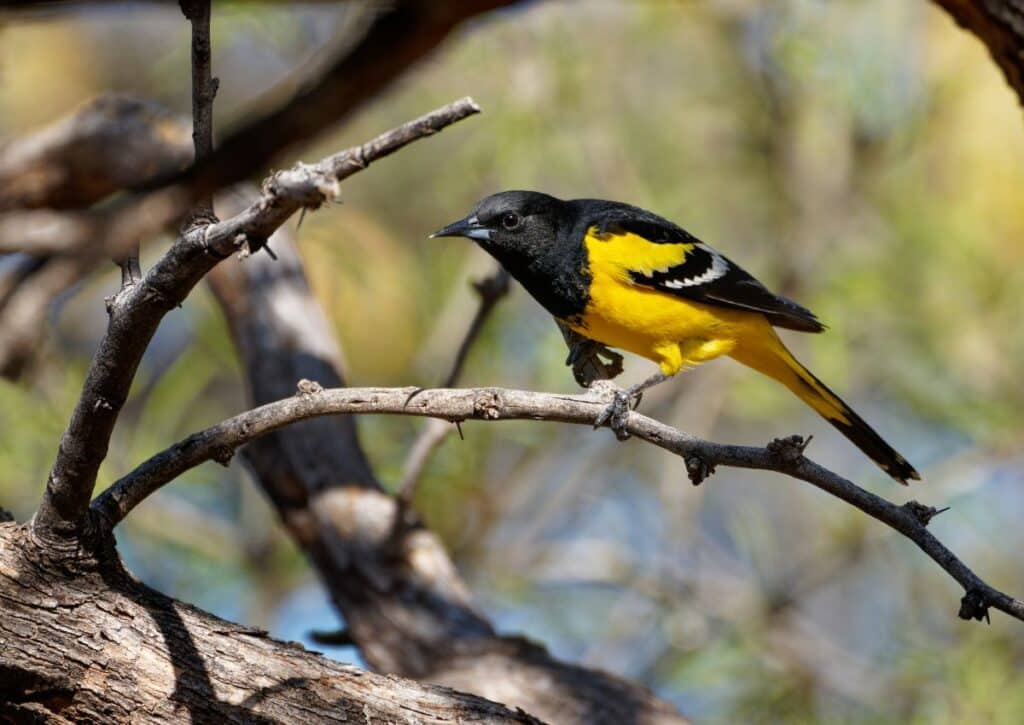
For both novice and seasoned birders, the park offers an ever-changing tableau of sightings. One day it might be the vibrant hues of a warbler catching the eye, and the next, the graceful flight of a hawk overhead. Each visit promises new discoveries, with the vast species list ensuring that no two birdwatching expeditions are ever the same.
So, whether you’re an avid birder with a checklist in hand or simply someone looking to appreciate the wonders of nature, the Guadalupe Mountains beckon. Within its expansive boundaries lies a feathery treasure trove, waiting to be explored and celebrated.
Cave Dwellers
Beneath the rugged surface of the Guadalupe Mountains lies a labyrinth of mysteries, a subterranean world that captivates and intrigues. With over 300 known caves weaving their way beneath the park’s terrain, this vast underground network is more than just geological marvels; they are sanctuaries for an array of unique cave-dwelling creatures.
As one descends into the cool, dimly lit chambers, the outside world seems to fade away, giving way to an environment where adaptations reign supreme. Here, in the silent depths, creatures have evolved in remarkable ways to thrive in the darkness. Sight often becomes secondary, with many inhabitants relying on heightened senses of touch, hearing, or even echolocation.
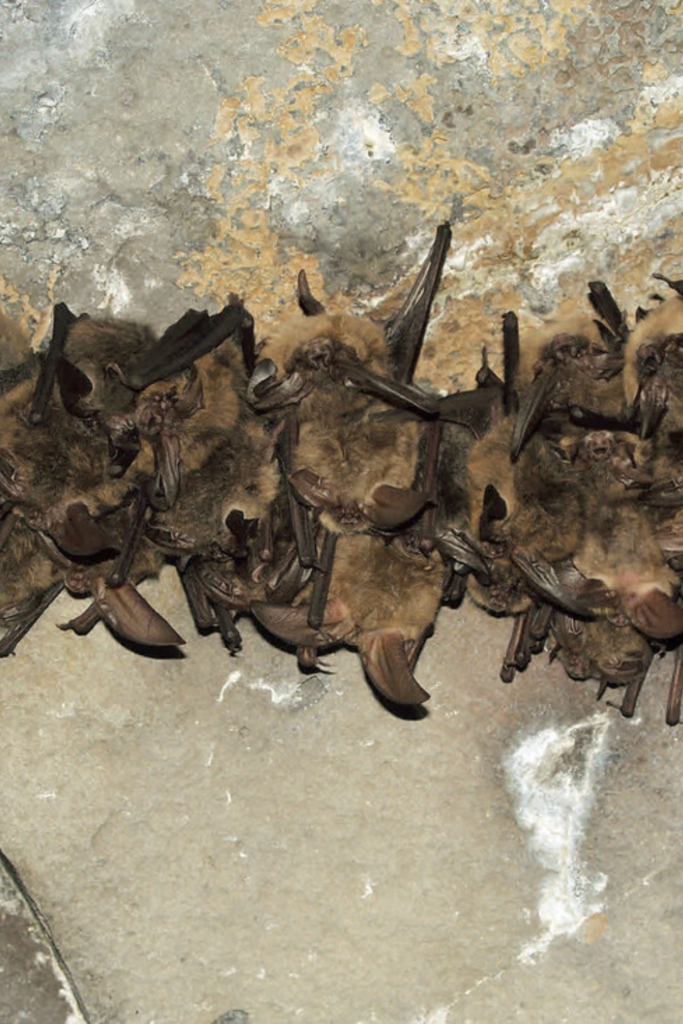
From delicate troglobites that have never seen the light of day to hardy bats that oscillate between the cave’s shadows and the world above, the diversity is astounding. These caves are not merely voids in the rock; they teem with life, each species playing a crucial role in the delicate underground ecosystem.
For those who venture into the Guadalupe Mountains, the caves serve as a reminder of nature’s boundless capacity for adaptability and resilience. While the mountaintops offer breathtaking vistas, the caves below whisper tales of life’s tenacity in the most unexpected places.
Rattle Warning
The vast landscapes of the Guadalupe Mountains are filled with sounds: the rustling of leaves, the chirping of birds, and the gentle whispers of the wind. But there’s one sound that commands immediate attention — the unmistakable rattle of the Western Diamondback Rattlesnake.
This iconic snake, with its patterned scales and sharp, venomous fangs, is as much a part of the park’s ecosystem as any other creature. But it’s their unique auditory warning system that sets them apart.
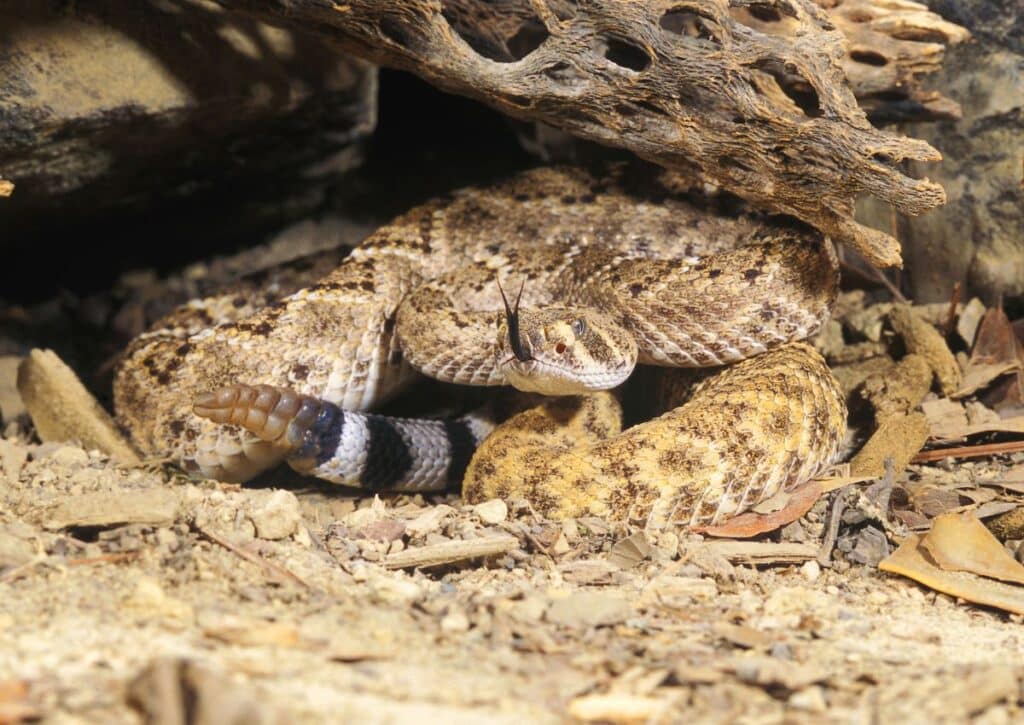
Before a confrontation or when feeling threatened, the snake vigorously shakes its tail, producing a rattling sound that resonates through the silence. It’s nature’s built-in alarm, signaling to potential threats or curious onlookers to keep their distance.
For many visitors, the sound of the rattle is a thrilling yet cautionary experience. While the snake’s venom can be potent, they are not inherently aggressive creatures. More often than not, the rattlesnake uses its distinctive rattle as a preventive measure, preferring to avoid confrontation when given the chance.
So, as you navigate the trails and terrains of the Guadalupe Mountains, let the rattle serve as a reminder of nature’s intricate balance of beauty and danger. It underscores the need to tread with respect and awareness in the wild, where every creature has its unique way of saying, “I’m here, be cautious.”
Elk Return
The tapestry of Guadalupe Mountains National Park tells a story of resilience, renewal, and nature’s remarkable ability to bounce back. One of the most heartening chapters in this tale revolves around the majestic elk. Once roaming the vast landscapes of Texas in large numbers, they faced the grim fate of extermination due to hunting and habitat loss.
However, the narrative didn’t end there. Through concerted conservation efforts and the vision of wildlife enthusiasts, elk were reintroduced to their former habitats. Today, the Guadalupe Mountains stand as a testament to this success story, providing a sanctuary for these grand creatures.

Visitors to the park are often treated to the sight of elk grazing peacefully in meadows or ambling along the mountainous terrains.
Their regal antlers, poised stance, and gentle eyes evoke a sense of awe and admiration. But more than their beauty, they symbolize hope and the incredible outcomes that can be achieved when humans work in harmony with nature.
The return of the elk to the Guadalupe Mountains isn’t just about restoring an ecosystem; it’s about righting past wrongs and reaffirming our commitment to preserving the delicate balance of our environment.
For those wandering the park’s trails, the presence of the elk serves as a poignant reminder of nature’s enduring spirit and the potential for rebirth against all odds.
Things to Do in Guadalupe Mountains National Park
- Hiking Adventures: The park boasts over 80 miles of trails, ranging from easy walks like the Pinery Trail to the challenging hike up to Guadalupe Peak, the highest point in Texas.
- Birdwatching: With over 300 recorded species, the park is a haven for bird enthusiasts. Keep an eye out for the rare Colima Warbler or the majestic Golden Eagle.
- Stargazing: Far from city lights, the park offers some of the darkest night skies in the country, making it a prime spot for stargazing and astrophotography.
- Cave Exploration: While many of the park’s 300 caves are not accessible to the public, guided tours occasionally provide insights into this underground world.
- Wildlife Viewing: From mule deer with their large ears to elusive mountain lions, there’s always a chance to spot the park’s varied wildlife. Don’t forget about the seasonal tarantula migrations!
- Camping: There are two established campgrounds in the park, Pine Springs and Dog Canyon, providing a perfect base for multi-day adventures.
- Historical Sites: Visit the Frijole Ranch to get a glimpse of the region’s history, from early settlers to Native American inhabitants.
- Nature Programs: Join park rangers for guided walks, talks, and evening programs that delve into the park’s rich natural and cultural history.
- Photography: With its varied landscapes, from salt flats to soaring peaks, the park offers endless opportunities for capturing stunning photographs.
Whether you’re a seasoned adventurer or looking for a serene escape, Guadalupe Mountains National Park offers activities and experiences to suit every interest and energy level.
Leaving Thoughts
As the sun sets over the Guadalupe Mountains, casting a golden hue across its vast terrains, one can’t help but reflect on the wonders that lie within its boundaries. From ancient seas immortalized in limestone to the intricate dance of predators and prey, the park stands as a living testament to nature’s endless marvels and adaptability.
Each creature, whether it be the elusive mountain lion, the rare Colima warbler, or the resilient elk, tells a story of survival, evolution, and the intricate web of life.
For wildlife enthusiasts and casual visitors alike, the Guadalupe Mountains offer more than just scenic vistas; they offer lessons in resilience, tales of revival, and countless moments of awe.
It’s a place where the past intertwines with the present, and where every rock, cave, and rustle in the bushes holds a story waiting to be discovered.
As we journey forward, let us carry with us the memories and lessons from this remarkable national park. Let it be a reminder of our responsibility to nature, the importance of conservation, and the endless wonders that await when we tread lightly and with reverence.
The Guadalupe Mountains beckon, not just as a destination, but as an enduring symbol of nature’s boundless spirit.


